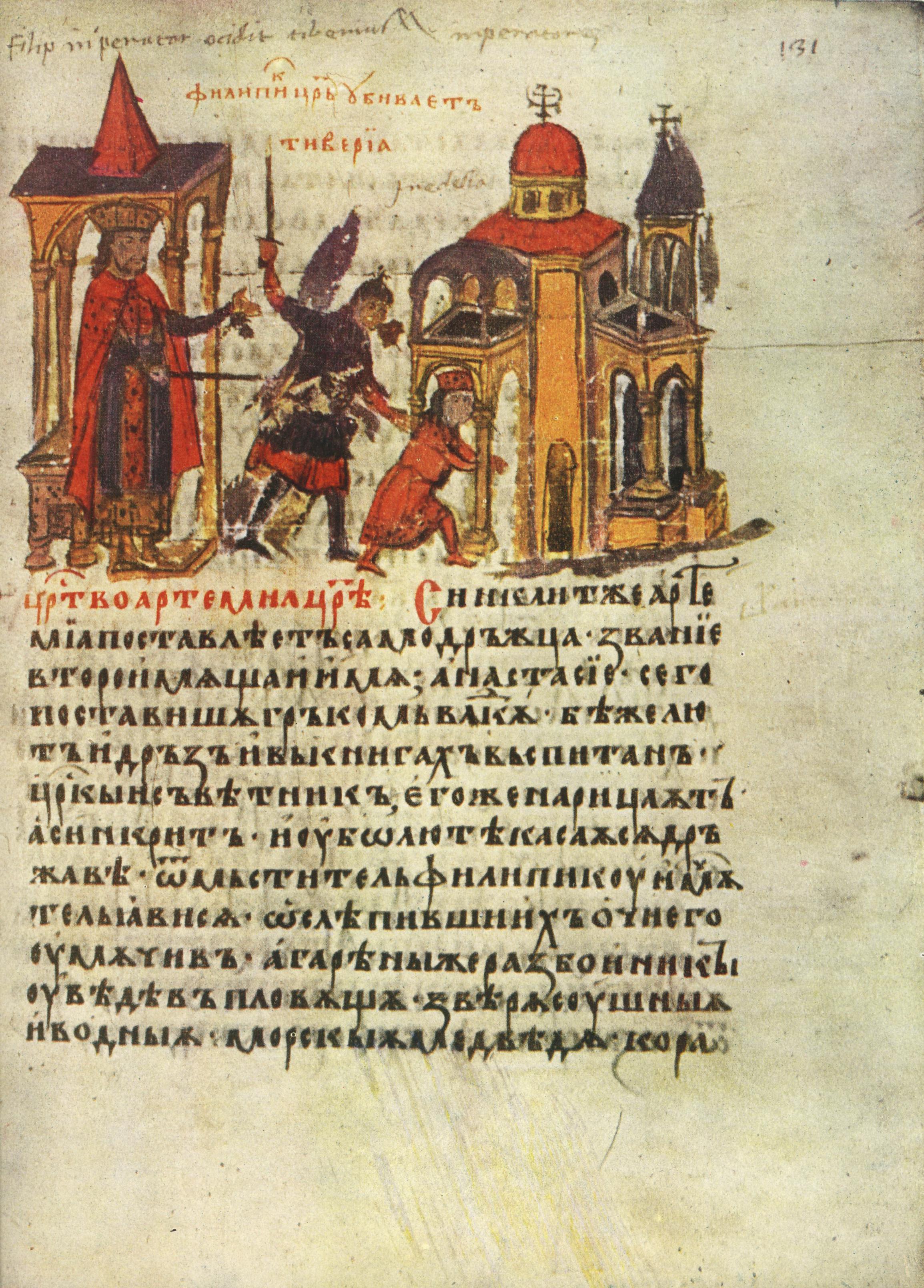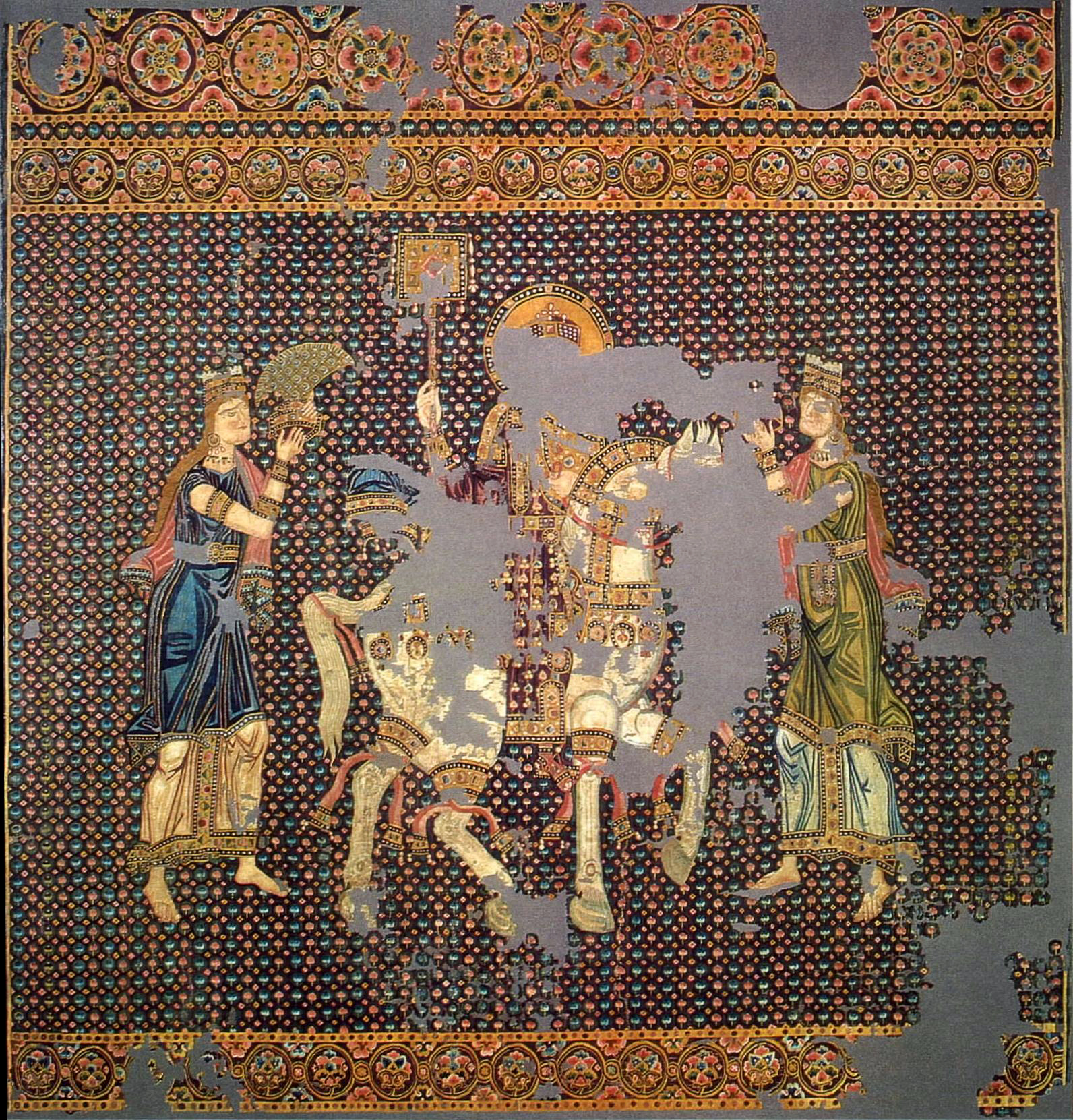|
Byzantine Armenia
Byzantine Armenia, sometimes known as Western Armenia, is the name given to the parts of Kingdom of Armenia that became part of the Byzantine Empire. The size of the territory varied over time, depending on the degree of control the Byzantines had over Armenia. The Byzantine and Sassanid Empires divided Armenia in 387 and in 428. Western Armenia fell under Byzantine rule, and Eastern Armenia fell under Sassanid control. Even after the establishment of the Bagratid Armenian Kingdom, parts of historic Armenia and Armenian-inhabited areas were still under Byzantine rule. The Armenians had no representation in the Ecumenical Council of Chalcedon in 451, due to their struggle against the Sassanids in an armed rebellion. For that reason, there appeared a theological drift between Armenian and Byzantine Christianity. Regardless, many Armenians became successful in the Byzantine Empire. Numerous Byzantine emperors were either ethnically Armenian, half-Armenian, part-Armenian or possi ... [...More Info...] [...Related Items...] OR: [Wikipedia] [Google] [Baidu] |
Marzpanate Armenia
Sasanian Armenia, also known as Persian Armenia and Persarmenia ( hy, Պարսկահայաստան – ''Parskahayastan''), may either refer to the periods in which Armenia ( pal, 𐭠𐭫𐭬𐭭𐭩 – ''Armin'') was under the suzerainty of the Sasanian Empire or specifically to the parts of Armenia under its control such as after the partition of 387 when parts of western Armenia were incorporated into the Eastern Roman Empire while the rest of Armenia came under Sasanian suzerainty but maintained its existing kingdom until 428. In 428, Armenian nobles petitioned Bahram V to depose Artaxias IV (r. 422);''Introduction to Christian Caucasian History:II: States and Dynasties of the Formative Period'', Cyril Toumanoff, Traditio, Vol. 17, 1961, Fordham University, 6. Bahram V (r. 420–438) abolished the Kingdom of Armenia and appointed Veh Mihr Shapur as ''marzban'' (governor of a frontier province, "margrave") of the country, which marked the start of a new era known as th ... [...More Info...] [...Related Items...] OR: [Wikipedia] [Google] [Baidu] |
Philippikos Bardanes
Philippicus ( la, Filepicus; el, Φιλιππικός, Philippikós) was Byzantine emperor from 711 to 713. He took power in a coup against the unpopular emperor Justinian II, and was deposed in a similarly violent manner nineteen months later. During his brief reign, Philippicus supported monothelitism in Byzantine theological disputes, and saw conflict with the First Bulgarian Empire and the Umayyad Caliphate. Biography Philippicus was originally named Bardanes (; hy, Վարդան, Vardan , italic=yes ); he was the son of the patrician Nicephorus, who was of Armenian extraction from an Armenian colony in Pergamum. The Armenian background of Philippicus has been supported by Byzantinist historians Peter Charanis and Nicholas Adontz, and disputed by Anthony Kaldellis. Kaldellis adds that Bardanes was probably born and raised in the Byzantine realm, as his father Nicephorus possibly was. Contemporaneous sources attest to Bardanes' tutoring, scholarly interests, learning ... [...More Info...] [...Related Items...] OR: [Wikipedia] [Google] [Baidu] |
Artabasdos
Artavasdos or Artabasdos ( el, or , from Armenian: Արտավազդ, ''Artavazd'', ''Ardavazt''), Latinized as Artabasdus, was a Byzantine general of Armenian descent who seized the throne from June 741 or 742 until November 743, in usurpation of the reign of Constantine V. Rise to power In about 713, Emperor Anastasius II appointed Artabasdos as governor ( ''stratēgos'') of the Armeniac theme (Θέμα Άρμενιάκων, Thema Armeniakōn), the successor of the Army of Armenia, which occupied the old areas of the Pontus, Armenia Minor, and northern Cappadocia, with its capital at Amasea. After Anastasius' fall, Artabasdos made an agreement with his colleague Leo, the governor of the Anatolic theme, to overthrow the new Emperor Theodosius III. This agreement was sealed with the engagement of Leo's daughter Anna to Artabasdos, and the marriage took place after Leo III ascended the throne in March 717. Artabasdos was awarded the rank of ''kouropalates'' ("master of th ... [...More Info...] [...Related Items...] OR: [Wikipedia] [Google] [Baidu] |
Mizizios
Mizizios or Mezezius ( el, Μιζίζιος; hy, Մժէժ, ''Mžēž'' or ''Mzhezh'') was an Armenian noble who served as a general of Byzantium, later usurping the Byzantine throne in Sicily from 668 to 669. Origin and early career According to the Byzantine chroniclers, Mizizios was an Armenian, and "exceedingly handsome and beautiful". According to Cyril Toumanoff, he descended from the princely Gnuni family. In a letter supposedly written by Pope Gregory II to the Emperor Leo III the Isaurian (r. 717–741 A.D), he is referred to as ''komes'' of the Opsikion ( la, obsequium)—at that time not yet a province, but rather the emperor's personal military retinue and field army. The 12th-century Syriac chronicle of Michael the Syrian, and the so-called ''Chronicle of 1234'', also accord him the rank of ''patrikios''. Usurpation and death Mizizios accompanied Emperor Constans II (r. 641–668 A.D) in his Italian and Sicilian expedition. When Constans was murdered in Syracuse, ... [...More Info...] [...Related Items...] OR: [Wikipedia] [Google] [Baidu] |
John I Tzimiskes
John I Tzimiskes (; 925 – 10 January 976) was the senior Byzantine emperor from 969 to 976. An intuitive and successful general, he strengthened the Empire and expanded its borders during his short reign. Background John I Tzimiskes was born to a father belonging to the Kourkouas family of Armenian origin, and a mother belonging to the Phokas family of Greek-Armenian origin. Scholars have speculated that "''Tzimiskes''" was derived either from the Armenian ''Chmushkik'' (Չմշկիկ), meaning "red boot"," John I (Roman emperor)". ''Encyclopædia Britannica''. or from an Armenian word for "short stature", as explained by Leo the Deacon. A more favorable explanation is offered by the medieval Armenian historian Matthew of Edessa, who states that Tzimiskes was from the region of Khozan, from the area called Chmushkatzag. Khozan was located in the region of Paghnatun, in the Byzantine province of Fourth Armenia (Sophene).See Matthew of Edessa. ''The Chronicle of Matthe ... [...More Info...] [...Related Items...] OR: [Wikipedia] [Google] [Baidu] |
Romanos I
Romanos I Lekapenos ( el, Ρωμανός Λεκαπηνός; 870 – 15 June 948), Latinized as Romanus I Lecapenus, was Byzantine emperor from 920 until his deposition in 944, serving as regent for the infant Constantine VII. Origin Romanos Lekapenos, born in Lakape (later Laqabin) between Melitene and Samosata (hence the name), was the son of an Armenian peasant with the remarkable name of Theophylact the Unbearable (Theophylaktos Abastaktos). However, according to the Byzantinist Anthony Kaldellis, Romanos is discussed in many Byzantine sources, but none of them calls him an Armenian. His father came from humble origin and that's the reason he was assumed to have been Armenian. This alleged ethnicity has been repeated so often in literature that it has acquired the status of a known fact, even though it is based on the most tenuous of indirect connections. Nevertheless, his father Theophylact, as a soldier, had rescued the Emperor Basil I from the enemy in battle at Tephr ... [...More Info...] [...Related Items...] OR: [Wikipedia] [Google] [Baidu] |
Greeks
The Greeks or Hellenes (; el, Έλληνες, ''Éllines'' ) are an ethnic group and nation indigenous to the Eastern Mediterranean and the Black Sea regions, namely Greece, Greek Cypriots, Cyprus, Greeks in Albania, Albania, Greeks in Italy, Italy, Greeks in Turkey#History, Turkey, Greeks in Egypt, Egypt, and, to a lesser extent, other countries surrounding the Mediterranean Sea. They also form a significant Greek diaspora, diaspora (), with Greek communities established around the world.. Greek colonies and communities have been historically established on the shores of the Mediterranean Sea and Black Sea, but the Greek people themselves have always been centered on the Aegean Sea, Aegean and Ionian Sea, Ionian seas, where the Greek language has been spoken since the Bronze Age.. Until the early 20th century, Greeks were distributed between the Greek peninsula, the western coast of Asia Minor, the Black Sea coast, Cappadocia in central Anatolia, Egypt, the Balkans, Cyprus, an ... [...More Info...] [...Related Items...] OR: [Wikipedia] [Google] [Baidu] |
Macedonian Dynasty
The Macedonian dynasty (Greek: Μακεδονική Δυναστεία) ruled the Byzantine Empire from 867 to 1056, following the Amorian dynasty. During this period, the Byzantine state reached its greatest extent since the Muslim conquests, and the Macedonian Renaissance in letters and arts began. The dynasty was named after its founder, Basil I the Macedonian who came from the theme of Macedonia, which, at the time, was part of Thrace. Origins The dynasty's ethnic origin is unknown, and has been a subject of debate. During Basil's reign, an elaborate genealogy was produced that purported that his ancestors were not mere peasants, as everyone believed, but descendants of the Arsacid (Arshakuni) kings of Armenia, and also of Constantine the Great. Some Persian writers such as Hamza al-Isfahani or Al-Tabari, called Basil a ''Saqlabi'', an ethnogeographic term that usually denoted the Slavs, but it can be interpreted as a generic term encompassing the inhabitants of the re ... [...More Info...] [...Related Items...] OR: [Wikipedia] [Google] [Baidu] |
Basil I
Basil I, called the Macedonian ( el, Βασίλειος ὁ Μακεδών, ''Basíleios ō Makedṓn'', 811 – 29 August 886), was a Byzantine Emperor who reigned from 867 to 886. Born a lowly peasant in the theme of Macedonia, he rose in the Imperial court. He entered into the service of Theophilitzes, a relative of Emperor Michael III (r. 842–867), and was given a fortune by the wealthy Danielis. He gained the favour of Michael III, whose mistress he married on the emperor's orders, and was proclaimed co-emperor in 866. He ordered the assassination of Michael the next year. Despite his humble origins, he showed great ability in running the affairs of state. He was the founder of the Macedonian dynasty. He was succeeded upon his death by his son (perhaps actually Michael III's son) Leo VI. From peasant to emperor Basil was born to peasant parents in late 811 (or sometime in the 830s in the estimation of some scholars) at Chariopolis in the Byzantine theme of Macedonia ( ... [...More Info...] [...Related Items...] OR: [Wikipedia] [Google] [Baidu] |
Cappadocians
Cappadocian Greeks also known as Greek Cappadocians ( el, Έλληνες-Καππαδόκες, Ελληνοκαππαδόκες, Καππαδόκες; tr, Kapadokyalı Rumlar) or simply Cappadocians are an ethnic Greek community native to the geographical region of Cappadocia in central-eastern Anatolia, roughly the Nevşehir Province and surrounding provinces of modern Turkey. There had been a continuous Greek presence in Cappadocia since antiquity, and the indigenous populations of Cappadocia, some of whose Indo-European languages may have been closely related to Greek, (cf. Phrygian) became entirely Greek-speaking by at least the 5th century. In the 11th century Seljuq Turks arriving from Central Asia conquered the region, beginning its gradual shift in language and religion. According to 1897 estimations, the sanjak of Konya had a total Greek population of 68,101 and according to Ottoman population statistics of 1914, the sanjak of Niğde had a total Greek population of 5 ... [...More Info...] [...Related Items...] OR: [Wikipedia] [Google] [Baidu] |
Heraclius
Heraclius ( grc-gre, Ἡράκλειος, Hērákleios; c. 575 – 11 February 641), was Eastern Roman emperor from 610 to 641. His rise to power began in 608, when he and his father, Heraclius the Elder, the exarch of Africa, led a revolt against the unpopular usurper Phocas. Heraclius's reign was marked by several military campaigns. The year Heraclius came to power, the empire was threatened on multiple frontiers. Heraclius immediately took charge of the Byzantine–Sasanian War of 602–628. The first battles of the campaign ended in defeat for the Byzantines; the Persian army fought their way to the Bosphorus but Constantinople was protected by impenetrable walls and a strong navy, and Heraclius was able to avoid total defeat. Soon after, he initiated reforms to rebuild and strengthen the military. Heraclius drove the Persians out of Asia Minor and pushed deep into their territory, defeating them decisively in 627 at the Battle of Nineveh. The Persian king Khosrow II w ... [...More Info...] [...Related Items...] OR: [Wikipedia] [Google] [Baidu] |
.png)
.jpg)





